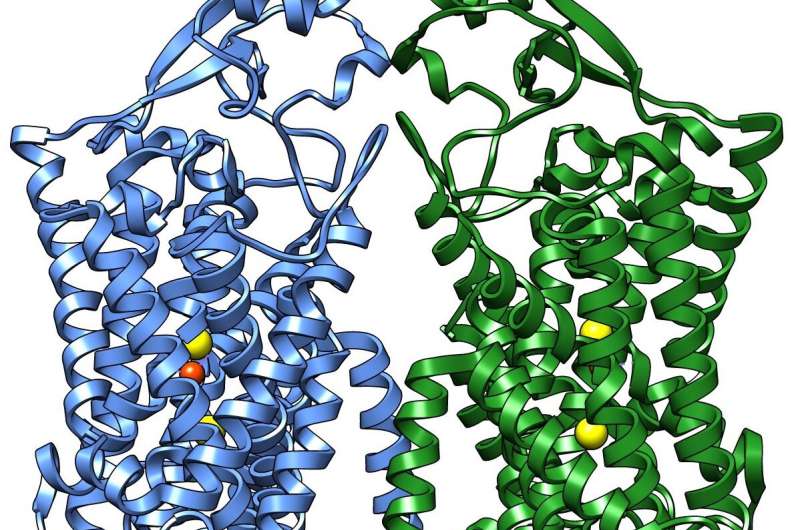First structure of human cotransporter protein family member solved

In work that could someday improve treatments for epilepsy, UT Southwestern scientists have published the first three-dimensional structure of a member of a large family of human proteins that carry charged particles—ions—across the cell membrane.
The potassium chloride cotransporter 1 (KCC1) structure solved in this study carries positively charged potassium ions (K+) and negatively charged chloride (Cl-) ions across cell membranes to help regulate the volume of the cell. The protein is one of a large family of cotransporters found in many of the body's tissues, particularly in the kidneys and the brain.
Despite extensive study of cotransporters, the lack of high-resolution structures has hindered a deeper understanding of their actions. The scientists solved the structure using cryo-electron microscopy (cryo-EM) - an advanced technology in which samples are frozen at extremely low temperatures at speeds that prevent the formation of ice crystals.
Mutations in this family of cotransporters can lead to diseases such as hereditary epilepsy, including one form that starts in infancy, said Dr. Xiao-chen Bai, corresponding author of the Science study. Drugs that target cotransporters are currently used as diuretics to treat high blood pressure.
"Cryo-EM was the only way to determine the structure of an integral membrane protein such as this one. We hope this structure will facilitate the design of drugs that target this protein," said Dr. Bai, Assistant Professor of Biophysics and Cell Biology and a Virginia Murchison Linthicum Scholar in Medical Research as well as a Cancer Prevention and Research Institute of Texas (CPRIT) Scholar.
Proteins on the cellular membrane have been particularly resistant to X-ray crystallography, formerly considered the gold standard in structural biology technology before cryo-EM.
In cryo-EM, samples are viewed using robot-assisted microscopes that can be twice as tall as a person. These microscopes containing high-tech electron detectors work with powerful computers to record multiple images and apply advanced algorithms to interpret the data. UT Southwestern's Cryo-EM Facility operates 24 hours a day, seven days a week.
This work at UT Southwestern using cryo-EM also required advanced specimen preparation techniques that Dr. Bai is known for internationally.
More information: Si Liu et al, Cryo-EM structures of the human cation-chloride cotransporter KCC1, Science (2019). DOI: 10.1126/science.aay3129
Journal information: Science
Provided by UT Southwestern Medical Center



















